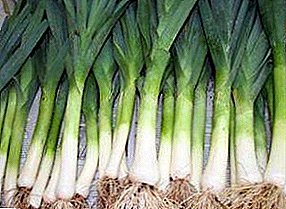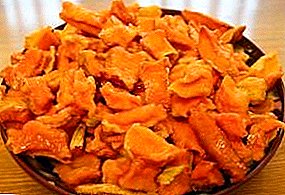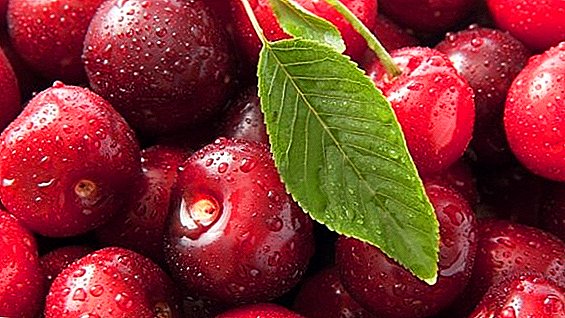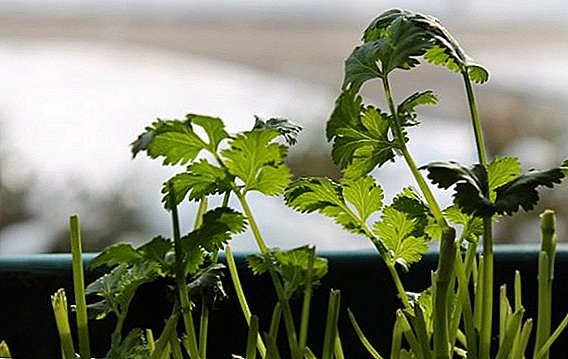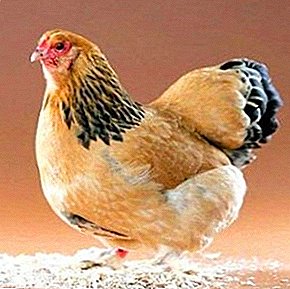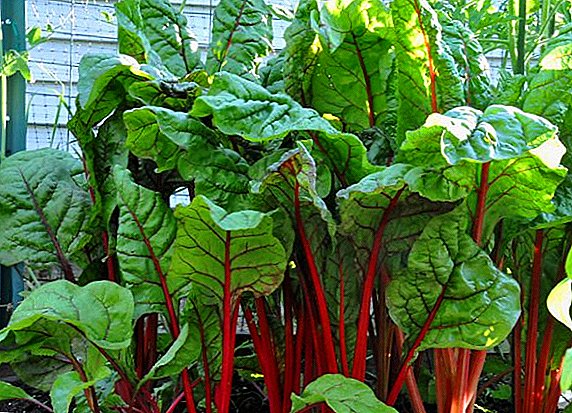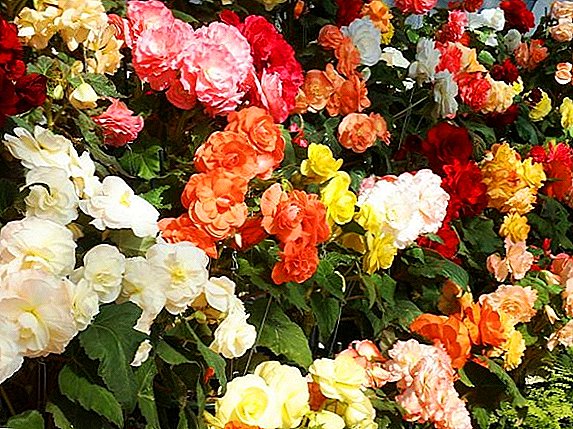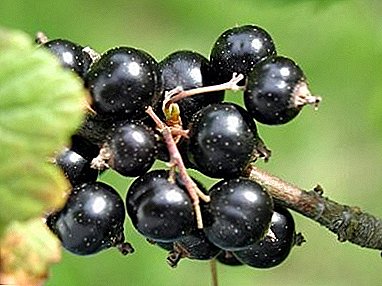
This berry shrub can be found in the garden by a specific smell ("currant" - in the old Russian).
So we call him for several centuries currants, distinguishing the color of fruits on black, red and golden.
Black we prefer: according to the usual distribution, the unique benefits of berries, the healing property of absolutely all the morphological elements of the bush.
We do not stop picking berries from wild plants, but we especially honor the varietal berries.
Region of breeding and breeding history
The natural range of black currant are all continents of the Northern Hemisphere. Somewhere currant represented by only one species, as in Europe, and somewhere by all the other 149th species. Especially rich in the variety of wild berries - Siberia, the Far East and North America.
Main task a man who had been engaged in black currant cultivation since the 16th century was getting larger fruits than in nature and giving new hybrids life-resistance to diseases and pests.
 Therefore, plants savages and to this day are actively involved in the process of crossing, giving unique qualities such as "Belarusian Sweet".
Therefore, plants savages and to this day are actively involved in the process of crossing, giving unique qualities such as "Belarusian Sweet".
In the creation of this variety, the breeders of the National Institute of Critical Studies of Belarus used a complex method of interspecific crossing.
They took as a basis hybrid forms 2-4D or 2-6D, in the pedigree of which the heredity of popular European species and selected subspecies from Siberia and the Far East affected.
10 years a hybrid passed varietal tests in order to get into the State Register in 1979 as recommended for cultivation in 10 regions of the Russian Federation.
Nowadays, a well-proven, reliable grade "Belarusian sweet" - an indispensable garden plant in industrial farms and private estates of 45 regions of Russia. It is recognized as the leading variety of this species for the Non-chernozem zone.
However, such varieties as Bagheera, Gulliver, Venus, Dachnitsa, Valovaya and Dobrynya are quite often found in the gardens of this region.
20 berries black currant in the daily diet - daily rate our body in ascorbic acid.
A photo






Description of the Belarusian Sweet currant variety
Black currant "Belarusian sweet" description. it direct gooseberry relative, deciduous, bushy plant. In nature, it prefers mixed forests, river valleys and ravine slopes. Growing alone or in communities.
Actually, these same habits are also characteristic of the variety. "Belarusian sweet":
- loves the light, but does not shy away from the penumbra;
- prefers fertile drained soils, but grows well on loams;
- afraid of temperature changes in the flowering phase and does not tolerate waterlogging.
In the shade, the plant can stop fruiting, and in the vicinity of sedge pick up cup rust.
 Bush according to the height, they are attributed to vigorous (up to 1.2 m), according to the scatter of shoots - medium spread (up to 1, 2 m).
Bush according to the height, they are attributed to vigorous (up to 1.2 m), according to the scatter of shoots - medium spread (up to 1, 2 m).The form has a rounded, forming a powerful bush structure with straight shoots.
It grows annually from the base with new basal shoots, which in a year already begin to branch, and after 3 years - bear fruit.
They form the skeleton of a bush, which after 8 years loses its former productivity. The numb shoots are cut out over time, and the old plant, which has reached 15 years old, is replaced by a new one.
- Root system located superficially in a 30-centimeter layer of soil, but an adult plant can give powerful roots deep down (up to 2 m). Therefore, it is important when planting to take into account the depth of groundwater.
- Currant Shoots represented by 4 types (mixed, fruit, bouquet, collar). They also differ in color: some of them are of anthocyaonic coloration - in the range of saturated red - violet color, which depends on the acidic environment.
Medium in thickness - gray, slightly pubescent. Each new shoot has 3 growth zones and only 2 (upper) fruiting zones.
- Kidney in terms of functionality they are presented: sleeping, growth and flowering. At different shoots, buds vary in color, size and shape. Growing buds give growth basal shoots, flower - fruits. Sleepers - waiting in the wings, in case of extreme conditions for the plant.
- Leaves - light green (smaller and lighter at the ends of the branches) have a 3-blade structure with a powerful middle lobe. The surface of the sheet plate is dull, wrinkled, wavy edge with teeth. Scape - red-purple, long.
- Flowers - self-fertile, which depends on the ratio of the size of the stamens and the column. The color is faded yellowish-green, the flowers are small bell-shaped, with 5 oval petals, gathered in a brush, on which there can be opened flowers and buds at the same time. Flowering does not take place simultaneously, but sequentially: from the base to the end of the brush.
- Brushformed in the process of flowering, in the period of appearance of the ovary acquires a size of up to 7 cm (3-6 berries). Ripening berries is the same as flowering, consistently. Brushes loose, hanging, sometimes combined in clusters.
- Berry - rounded, fragrant, not calibrated, in different stages of growth changes color from green to brown and dark purple; the skin is shiny, dense contains dyes - from the group of flavanoids; each berry weighing 1.6 grams. up to 37 seeds.
The high content of vitamin "C" gives the fruit a rich sweet-sour taste. Overriding of fruits leads to their shedding.
- Yield varieties - up to 5 kg from a bush or 12 t / ha (in industrial production). Productivity tends to increase over 4-5 years, followed by stabilization (up to 12 years).
The highest productivity of the bush is observed at 6-8 years of age. Even unfavorable conditions during the flowering phase do not affect the yield.
As it was said, the taste of this currant is good, which makes it possible to make good jam from it, for example, in combination with summer apple varieties: Yellow Sugar, Korobovka, Red Hill, Papirovka, Dachny.
Non-simultaneous ripening of berries in the brush leads to a different size of the fruit, which affects the presentation. The variety is weakly vulnerable to spore lesions.
Main merits Belarusian black currant varieties:
 early entry into the fruiting period (for the 2nd year of the seedling's life);
early entry into the fruiting period (for the 2nd year of the seedling's life);- ability to self-pollination with efficiency up to 72%;
- abundant annual fruiting;
- early ripening (by mid-July);
- excellent consumer quality of berries;
- universality of use;
- winter hardiness;
- resistance to bacterial diseases and tick damage;
- successful reproduction by grafting.
Use of berries
Since the Belarusian Sweet is a universal variety, it may well be applied as follows:
- for therapeutic purposes, in multivitamin preparations (berries, buds, leaves) and anti-inflammatory ointments, based on gamma-linolenic acid contained in seeds;
- for decorative purposes, as an element of landscape design;
- as a productive honey plant (30kg / ha);
- as a flavoring (tea, kvass, sauces) and spice for pickling;
- as an ingredient of diet food (glucose-lowering salads);
- as raw materials for the production of beverages and confectionery: juices, compotes, syrups, kissels, tinctures, wines, liqueurs, yogurt, jams, jams, jellies, pastila, fillings for pies and sweets;
- as a product of instant freezing with preservation of taste of live berries.
Black currant fully retains all its useful properties not only in the process of freezing, but also in any type of processing for home-made preparations.
It goes well with red currants, for example with varieties: Andreichenko, Natalie, Jam, Beloved.
Care
What you need to know to "Belarusian sweet" growing and bearing fruit in your garden.
- Choosing the right place:
- closed to strong winds;
- with sufficient lighting;
- protected from spring waterlogging during the melting of the snow;
- removed from groundwater;
- soil acidity is not higher than pH7.
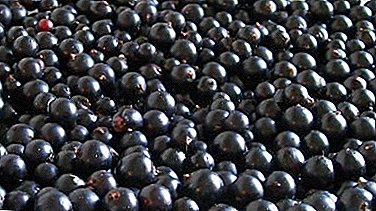 Landing until mid-October, avoiding subsequent transfers.
Landing until mid-October, avoiding subsequent transfers.- Creation in collective plantings of conditions for direct (inside the variety) and cross (with other varieties) pollination. At the same time the distance between the bushes should remain at least 1.5 meters.
- To constantly update the bush at the expense of basal shoots, it was initially planted in the ground at an angle of 45◦ so that the growth buds had where to turn.
- With the help of spring pruning can significantly help the plant recover after winter, leaving 10-12 shoots of different ages.
- Regular watering - 10 liters under the bush.
- Loosening should precede watering.
- Weeding is also relevant for currants.
- 2 times per season currants preferably sprayed with a solution of copper sulphate.
- Preparing the bush for the winter, you need to remove all dry leaves and a strong cord to pull off the bush in the basal part.
In the most severe frosts, in the middle of winter it is recommended water the plant and the ground under it with boiling water. Such stress therapy to increase the fullness of the brush and the size of the berries.
As for diseases, we recommend that you familiarize yourself with the most common diseases of horticultural crops about which detailed articles on our website are written: anthracnose, chlorosis, bacteriosis, oidium and mildew, as well as //selo.guru/ptitsa/bolezni-p/gribkovye/parsha .html, rust, bacterial burn and bacterial cancer, rubella.
Black currant variety "Belarusian sweet" - a treasure trove of health and benefits in one plant. Sow in a row - win in the harvest.


 Bush according to the height, they are attributed to vigorous (up to 1.2 m), according to the scatter of shoots - medium spread (up to 1, 2 m).
Bush according to the height, they are attributed to vigorous (up to 1.2 m), according to the scatter of shoots - medium spread (up to 1, 2 m). early entry into the fruiting period (for the 2nd year of the seedling's life);
early entry into the fruiting period (for the 2nd year of the seedling's life); Landing until mid-October, avoiding subsequent transfers.
Landing until mid-October, avoiding subsequent transfers.